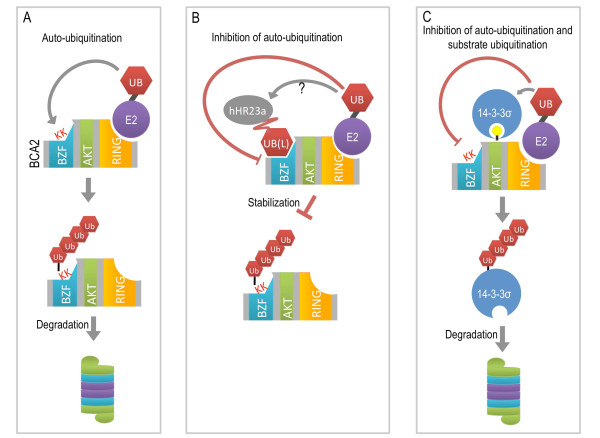Figure 6.
Model for BCA2 stability. [A] BCA2 in the presence of specific E2, but in the absence of binding partner or substrate is targeted to the proteasome for degradation through auto-ubiquitination in the BZF domain (as shown in Figure 2). [B] Depicts the potential interaction between BCA2 and hHR23a. We speculate that the ubiquitin-like (UBL) domain of hHR23a binds to the ubiquitin-binding domain (BZF) of BCA2, which not only leads to protein stabilization but also plays a role as a scaffold for ubiquitination of other substrates to aid BCA2 in its role as an E3 ligase. [C] 14-3-3σ binds BCA2 in the AKT phosphorylation domain which contains two 14-3-3 binding motifs, the result of binding is possible steric inhibition of the autoubiquitination of BCA2, leaving the RING domain of BCA2 available to facilitate the conjugation of ubiquitin to 14-3-3σ.

